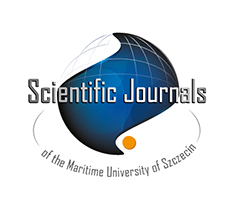The paper should be delivered in .rtf or .doc format. The Editorial Staff of the Scientific Journals reserves the right to modify or shorten the paper as well as to propose changes and corrections in agreement with the author. In case of notable changes and corrections, the paper may be returned to the author to be changed.
All reviews are anonymous - the author does not know the names of the reviewers, and reviewers of the author's name (double-blind review). The paper is given a reference number for future correspondence. The author is notified of the result. The names of the reviewers of the current year are published in the last issue every year. The names of the reviewers cooperating with the magazine is published on the website. Two positive reviews are required for the paper to be published.
Instructions for authors:
- the text must not exceed 10 (ten) and be no shorter than 6 (six) A4 pages. It must be written in Times New Roman (TNR) font, 11 point size, single line spacing, all margins - 2.5 cm;
- table captions, TNR 10 point size, must be centered and placed above tables;
- lettering in tables must be TNR 10 point size;
- figure captions must be centered and placed below figures, TNR 10 point size; the figure descriptions must not be smaller than TNR 9 point size;
- it is forbidden to wrap text around figures and tables;
- each paper must contain a title, abstract and keywords.
Article structure
Title
Concise and informative. Titles are often used in information-retrieval systems. Avoid abbreviations and formulae where possible.
Abstract
A concise and factual abstract is required (up to 300 words within one paragraph). The abstract should state briefly the purpose of the research, the principal results and major conclusions. An abstract is often presented separately from the article, so it must be able to stand alone. For this reason, References should be avoided. Also, non-standard or uncommon abbreviations should be avoided, but if essential they must be defined at their first mention in the abstract itself.
Keywords
Maximum of 6 keywords. Be avoiding general and plural terms and multiple concepts (avoid, for example, "and", "of"). Be sparing with abbreviations - only abbreviations firmly established in the field may be eligible. These keywords will be used for indexing purposes.
Introduction
State the objectives of the work and provide an adequate background, avoiding a detailed literature survey or a summary of the results.
Literature review
The literature review should include the latest publications, preferably no more than five years old. In justified cases, references may be made to older literature.
The literature review may be a separate section, but it may also be conducted in the introduction.
Material and methods
Provide sufficient details to allow the work to be reproduced by an independent researcher. Methods that are already published should be summarized, and indicated by a reference. Any modifications to existing methods should also be described. If quoting directly from a previously published method, use quotation marks and also cite the source.
Results
Results should be clear and concise.
Discussion
This should explore the significance of the results of the work, not repeat them. A combined Results and Discussion section is accepted. Avoid extensive citations and discussion of published literature.
Conclusions
Present the main conclusions of the study. Present the main limitations of the research conducted. Specify directions for further research.
Title page (separately)
Title
Author names and affiliations. Please clearly indicate the given name(s) and family name(s) of each author and check that all names are accurately spelled.
Present the authors' affiliation addresses (where the actual work was done) below the names.
Provide the full postal address of each affiliation, including the country name and, if available, the e-mail address of each author.
Corresponding author. Clearly indicate who will handle correspondence at all stages of refereeing and publication, also post-publication. This responsibility includes answering any future queries about Methodology and Materials. Ensure that the e-mail address is given and that contact details are kept up to date by the corresponding author.
The main text with a separated Introduction (Preface), Main chapters and subchapters, Final conclusion without numbering (Conclusion). Figures and tables: figure lines at least 0.5 pt wide, in at least 300 dpi resolution (additionally provided in a separate file, .tif or .jpg format). The font size for the figure description must be the same throughout the paper, but not bigger than 9. Handwritten descriptions are unacceptable! Wrapping text around figures and tables is forbidden. Tables and figures must be numbered consecutively in order of appearance within the paper. Variables must be written in italics, constants and numbers – no formatting.
Tables in the main text are to be formed as horizontal lines only (for a table header and optionally main sections). Please do not use vertical lines. Example:

Names and technical terms must be defined in the text or in footnotes at first mention. Uniform units of measurement consistent with the SI system should be used. Formulas (equations) must benumbered using Arabic numerals in consecutive order throughout the paper, in parentheses, aligned to the right. Acknowledgements (e.g. information about funding sources) should be located before the reference list. The reference list entries (min. 5 entries) should follow the citation order according to the Harvard Citation Style. The cited references in the text in round brackets: author & year e.g. (Neville, 2010; Kuo & Zhu, 2012). In reference list surnames capitalized, data in order: author(s), year of publication, title, place and publisher name, e.g.:
NEVILLE, C. (2010) The Complete Guide to Referencing and Avoiding Plagiarism. 2nd Ed. Maidenhead: Open University Press.
KUO, W., ZHU, X. (2012) Importance Measures in Reliability, Risk and Optimization. Principles and Applications. Wiley.
How to reference different type of sources

